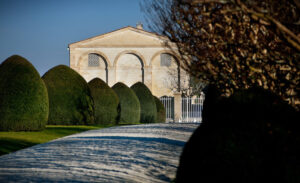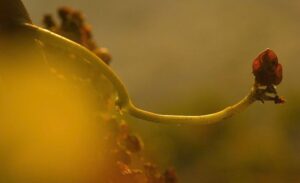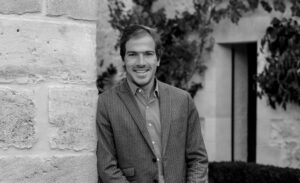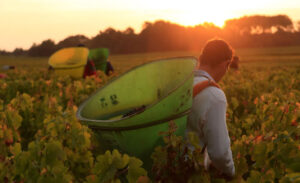Pavie Macquin, an underground melody
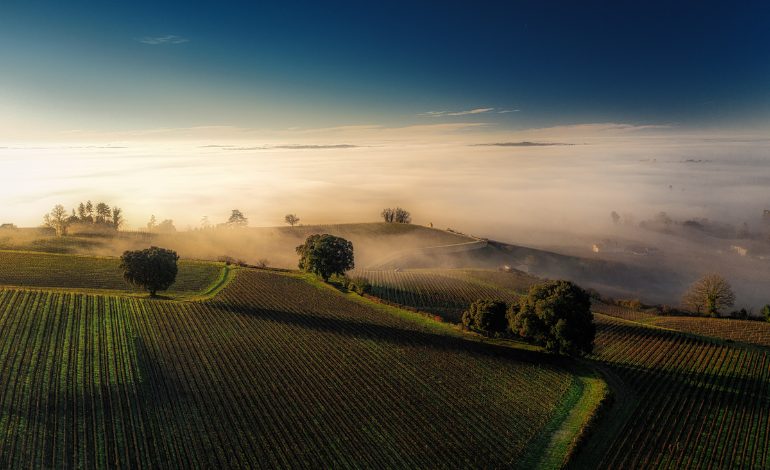

Pavie Macquin cultivates a taste for excellence, combined with a certain art of discrepancy. Let’s take a guided tour of this Saint-Emilion flagship estate and its new ageing cellar with manager Cyrille Thienpont.
On a cool December morning, the sun shines over the Saint-Emilion vineyards. Standing opposite the medieval village, the views of the monolithic church and its steeple are quite simply breathtaking. Cyrille Thienpont benefits from this magnificent viewpoint daily from Château Pavie Macquin, which he manages with his father, Nicolas. We start the visit with a nod to the estate’s founder, Albert Macquin: “Saint-Emilion owes him a lot: he was the one who implemented the technique of grafted vines in the 1880s, making it possible to save the vineyards from phylloxera. He was also a pioneer in the development of a scientific vision of winegrowing and plot-by-plot monitoring.” In keeping with the beliefs of its founder, plot division plays a crucial role at Château Pavie Macquin, where all the batches are tasted separately. Here, the terroir is outstanding. The vines, which are grown in a single block, thrive on clay-limestone soils offering a surprising diversity, with nine different typologies spread out over fifteen hectares. “At the top lie deep clay soils producing wine that is powdery and granular, yet also smooth. Wine grown on the edges is livelier. And on the small hill in the middle, the red clay soil gives juicy, mouth-watering wine! The terroir has a really magical effect on our old grape varieties”, Cyrille notes. To showcase this diversity, adapted tools are required. The team has benefited from brand-new facilities to produce increasingly polished wines since 2022.
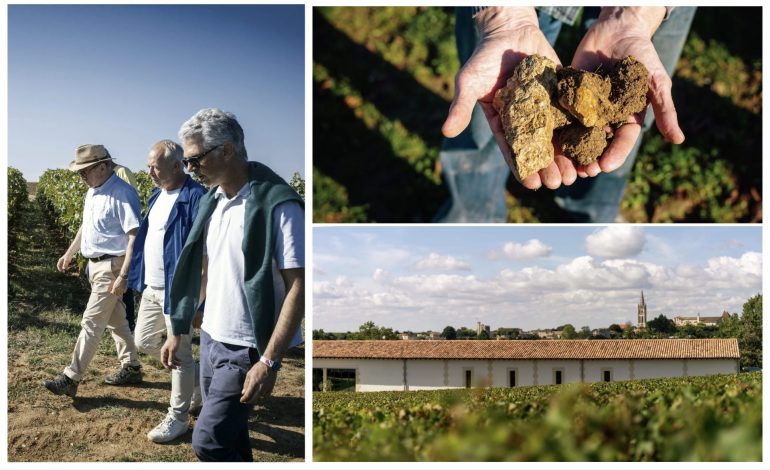
At the estate, the vineyard is planted with around 70% Merlot and 25% Cabernet Franc. The grapes are harvested by hand and sorted twice before being poured into somewhat unusual vats. Instead of being numbered, they are given slightly quaint female first names: Cunégonde, Aglaé, Berthe… “In the 1960s and 1970s, one of the co-owners found it a bit sad to label the vats with numbers, he had a poetic side”, the master of the house explains. We then head underground. After descending 7 metres, the “wow” effect takes you by surprise. The new barrel cellar is quite simply amazing. It is the epitome of streamlined elegance, mineral refinement and contrasts. All the essence of Château Pavie Macquin is reflected in this vast space scattered with nods to the terroir. The nuances of colour and texture on the concrete walls evoke the different layers of the clay-limestone soils. On the ceiling, 5,868 suspended pegs appear to undulate and evoke the curves of the wine. They have been sprinkled with diodes to reflect the stars! And in the centre of the room sits a 4-tonne rock extracted during the renovation. The overall effect is superb, and it has just been awarded the prestigious “Archdaily 2025 Buildings of the Year Award.”

But this building is not only beautiful to look at – it is also an incredible production tool. “The main advantage of this cellar is that it is spacious”, explains Cyrille Thienpont who leads us to the barrels where the estate’s juices are aged. The winegrower takes a pipette and plunges it in a barrel of Cabernet Franc before giving us the privilege of tasting it: “This grape variety adds an ethereal dimension. With it, the wine’s substance is lighter and it acquires a rather remarkable, almost evanescent character.” He then moves onto the Merlot, which is just as magnificent. All he needs to do is enhance the various batches through the delicate art of blending. “Added to Merlot, Cabernet Franc magnifies the Grand Vin in the same way that gothic art has enlarged the Romanesque perspective: it is like expanding the spaces and letting the light flood in through the large window”, Cyrille Thienpont explains.
Making a Grand Cru is also an exercise in poetry.


